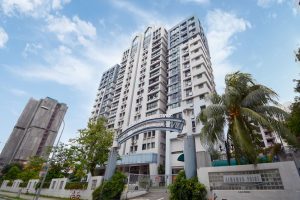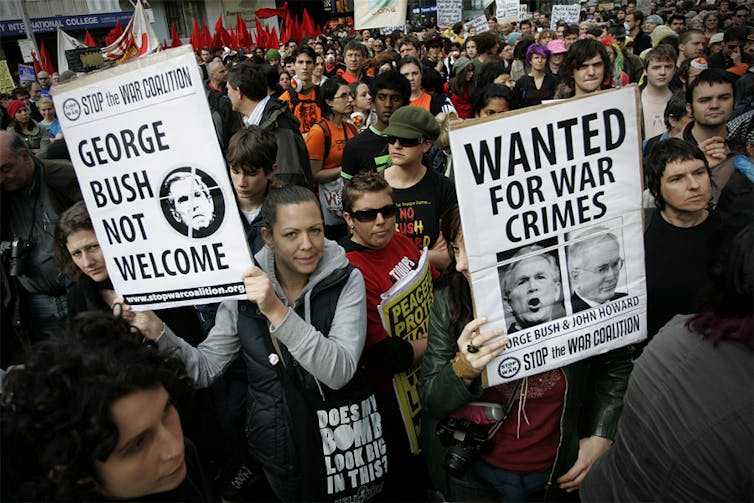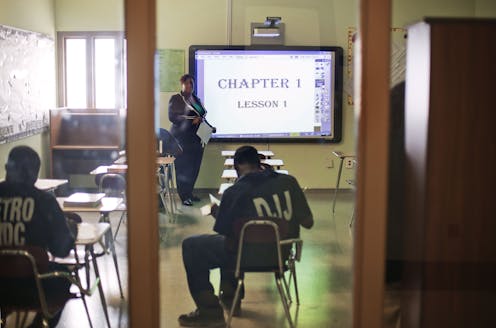“A STRONG PEOPLE-GOVERNMENT PARTNERSHIP, TO BUILD OUR FUTURE SINGAPORE”
1. In January 2016, shortly after the SG50 year, my predecessor President Tony Tan opened the 13th Parliament. Dr Tan reviewed how far we had come as a nation. He renewed our commitment to keep Singapore an exceptional nation, with a thriving economy and a caring and inclusive society.
An Eventful First Half of the Term
2. We are now midway through the current term of Government. It has been an eventful 32 months: the United States elected a new President; the Chinese Communist Party held its 19th National Congress; the United Kingdom voted to leave the European Union; and ISIS became a significant menace, though it has since been dealt a severe blow.
3. Singapore has navigated a steady path amidst an uncertain external environment. We deepened our engagement with neighbours, as well as major global powers. We advocated for free trade against rising protectionism, and helped to conclude the Comprehensive and Progressive Agreement for Trans-Pacific Partnership. We continued to uphold ASEAN centrality and unity.
4. We have done well at home too. The economy recorded steady growth, especially in 2017, which we hope will extend into 2018. Real wages rose steadily for all income groups. We are making progress in renewing our economy. The government, industries and unions are partnering one another to implement the recommendations of the Committee on the Future Economy.
5. We upgraded and extended our infrastructure. We opened Changi Terminal 4, launched 46,000 new BTO units, completed the addition of 1,000 more buses and opened new MRT lines. We sped up the upgrading of the North-South and East-West MRT lines. We are improving the reliability of our trains.
6. We continued to strive for a more caring and inclusive society. We strengthened education at all levels – from pre-school for toddlers to lifelong learning opportunities for all ages. We enhanced social safety nets and provided more support for the vulnerable – from KidSTART for at-risk young children to Silver Support for seniors who had earned low incomes.
7. The Singapore spirit shone bright. We rejoiced when Joseph Schooling won Singapore’s first Olympic gold medal, and when Yip Pin Xiu and Theresa Goh triumphed at the Rio Paralympics. We celebrated NS50 and saluted over a million national servicemen who have served their nation through the decades. The National Gallery opened to the public, including a permanent exhibition of the unique Nanyang style of painting.
8. We amended the Constitution to reflect our multi-racial values, by ensuring that all ethnic groups have a chance to be represented in the highest office in the land. I am honoured to serve as the first Malay President in 47 years after Encik Yusof Ishak. I renew today the pledge that I made when I took my oath of office in September last year: I will serve every Singaporean, regardless of race, language or religion.
9. This year’s Budget was a far-reaching one. We had to take some difficult decisions. These steps were necessary to strengthen our long-term fiscal position, ready us for an ageing population, and fund infrastructure investments on a sustainable basis. As your President, I will safeguard our reserves and ensure that they are drawn upon properly and only under exceptional circumstances, or for other very good reasons.
10. Our island-nation is doing well. The Government is fulfilling the tasks it set out to accomplish; relations with partners around the world are good; people live harmoniously with one another; and economic prospects are bright.
We Operate in an Uncertain and Changing Environment
11. But do not assume that Singapore will always continue to be successful. There are significant developments in our external and domestic environments that we must understand and deal with.
12. First, strategic changes. The centre of gravity of the world economy is shifting to Asia, as a result of China rising and India taking off. ASEAN, our immediate neighbourhood, is generating renewed interest among international investors. These trends bode well for Singapore.
13. But much depends on the relationship between the US and China, which underpins regional and global peace and prosperity. Both powers have high stakes in maintaining a stable and healthy relationship. However, their relationship is a dynamic one. As China’s strength grows and America’s interests evolve, both sides will need to manage the inevitable rivalries and disagreements, and exercise foresight and restraint. Trade frictions are just one aspect of US-China bilateral tensions that affect the rest of the world – especially small, open economies like ours.
14. Second, regional tensions. The Korean Peninsula is currently seeing fresh and positive developments, but it is a complex problem with a long history. Negotiations towards a peaceful resolution and ultimately, the denuclearisation of the Peninsula, will be complex and difficult.
15. Terrorism remains a clear and present danger. ISIS has lost the military battle in Iraq and Syria, but the extremist ideology behind it has not been eradicated. Southeast Asian fighters who joined ISIS in the Middle East may return home to mount attacks in and around their home countries. Singapore is a target. We must stay vigilant and united, and never allow a terrorist attack to cause discord and distrust among us. In particular, we must be careful of the dangers of online self-radicalisation.
16. Closer to home, relations with our immediate neighbours – Malaysia and Indonesia – are stable and multi-faceted. Our histories and heritages are intertwined. We have grown our partnerships in recent years, and will continue to strengthen them. We must tend these bilateral relationships carefully, especially during election seasons, and avoid becoming embroiled in their domestic politics.
17. Third, domestic developments. The texture of our society is changing as our population ages. This will place heavier demands on our healthcare and social security systems.
18. We have seen income inequality and social stratification break the social compact in many countries. If the same happens to us, our politics will turn vicious, our society will fracture and our nation will wither. We must tackle inequality, particularly the increasingly dissimilar starting points of children from different family backgrounds, before the problem becomes entrenched in our society.
19. Religious polarisation, xenophobia and extreme nationalism are also divisive forces that have grown stronger in many parts of the world. The cyber space is being used to spread falsehoods and misinformation, and to sow distrust within societies. We must not allow our nation to succumb to these forces.
The Next Phase
20. All these developments that I have outlined can affect us in unexpected ways. We need to watch them closely, tackle them resolutely, and make progress together. We already have policies and programmes to respond to these shifts. These tasks will occupy us beyond this term of Government.
21. In the meantime, the fourth generation leadership team is taking shape, and taking on more responsibilities. They will have to confront the question: “What is next for Singapore?”
22. Like their predecessors, the fourth generation leaders will uphold our foundational values – multi-racialism, meritocracy, incorruptibility, self-reliance, inclusivity and openness to the world. They recognise the constants of Singapore’s existence. A small, multi-cultural city-state, with no natural resources, in the heart of Southeast Asia, must survive and thrive on the wits and will of its people.
23. At the same time, the new leaders are conscious that Singapore is at quite an advanced stage of development. We may feel that we have more to lose now. We may be tempted not to go for bold changes, but instead be content to tweak things at the margins.
24. That would be the wrong approach. Singapore has a lot going for it. It is a vibrant global node in the heart of a thriving Asia; a multi-cultural society with people from diverse backgrounds living harmoniously side by side. We need to keep alive the spirit of our pioneers and be constantly driven to do better, with each generation surpassing the previous.
25. The fourth generation leaders will work with fellow Singaporeans to undertake the next phase of nation building. Together, they will build upon what earlier generations accomplished. They will fashion new ideas and fresh approaches to confront a different future.
26. We are beginning to see the imprint of the new leadership in developing and implementing public policies. Over time, these policies will be elaborated, refined, and will produce results. The work has begun, and will intensify from the second half of this term of Government. Let me outline the key priorities.
Securing a Place in the World for Singapore
27. First, we want to secure Singapore’s place in this changing world. To do so, we are prepared to stand and fight for our nation, defend our vital interests, and work with others in win-win partnerships.
28. The Singapore Armed Forces and Home Team are steadily building up their capabilities, including against unconventional threats like terrorism and cyber-attacks. Beyond equipment and capabilities, our strength ultimately lies in our people’s resolve to defend this country and be masters of our destiny.
29. As a small globalised city, we must uphold international law and the role of supra-national institutions. Against the tide of rising protectionism, we must champion free trade, and explore new opportunities to collaborate with others.
30. We seek to be friends with as many countries as possible. In particular, we will work for good relations with both the US and China.
31. The US has been a constructive and stabilising presence in the region for the past 70 years. It remains an important strategic partner for Singapore. We cooperate with the US in many areas, and will enhance this cooperation in the years ahead.
32. Our relationship with China is deep and productive. Through China’s four decades of reform and opening up, generations of leaders in both countries have worked closely together. We will continue to collaborate with China in its next phase of development, including participating in the Belt and Road Initiative.
33. In Southeast Asia, we will strive for an open and inclusive regional order, with all the major powers engaged. We will work with regional partners to strengthen ASEAN centrality and unity, and do our part to prevent the build-up of tensions in the South China Sea. This year, we are the ASEAN chair, but we will sustain our efforts for the long term.
Building a Well-Connected, World-Class City for Singaporeans
34. Second, Singaporeans want to live in a world-class city and an endearing home – clean, green and efficient; fun and connected; and we are prepared to think long term in planning our city and infrastructure, and building for future generations.
35. We will invest in infrastructure to keep Singapore one of the best connected cities in Asia, a hub and conduit for the flow of goods and services, capital and people, information and knowledge. We are building Changi Airport Terminal 5 and a new Tuas Port. The Kuala Lumpur-Singapore High Speed Rail and the Johor Bahru-Singapore Rapid Transit System Link will open up business opportunities and draw our two peoples closer. Beyond physical links, we will also develop Singapore as a node in the global flow of data.
36. We are renewing our HDB heartlands and investing heavily in new MRT infrastructure. Sustainable development will be a key consideration. We are making this a car-lite city, with vibrant public spaces and pathways for walking and cycling. We are working with Singaporeans to create a greener and better living environment, a City in a Garden. We will do our part to reduce carbon emissions.
37. A far-reaching transformation of Singapore’s cityscape will take shape in the coming decades. When Paya Lebar Air Base moves to Changi, it will free up an area larger than Ang Mo Kio for redevelopment. Moving the city ports to Tuas will double the size of the Central Business District. The possibilities in this new area – the Greater Southern Waterfront – are immense, and limited only by our imagination.
38. With bold thinking, we will create a metropolis that embraces the future.
Developing a Vibrant Economy with More Opportunities for Workers
39. Third, Singaporeans want our city to remain a nation of opportunities, where we can pursue dreams, chart fulfilling careers and lead meaningful lives. To achieve this, we are prepared to adapt to changing economic conditions, embrace technology, and continually upgrade our skills and knowledge.
40. We will continue to renew the economy to keep it productive, enterprising and innovative. Our investment in Research and Development is bearing fruit, and will enable us to exploit deep technology and digitalisation; create a Smart Nation; and conceive, test-bed and scale up new products and services.
41. This innovation ecosystem will strongly support entrepreneurship and further develop the start-up scene – in artificial intelligence, FinTech, advanced manufacturing, bioscience and other areas.
42. New business centres, such as the Jurong Lake District, Punggol Digital District, and Woodlands North Coast, will each have its own character and industry niche.
43. Companies will play a major role in economic restructuring. We will build a strong base of local firms with the capabilities to succeed both at home and abroad. Our enterprises must develop a strong culture of collaboration, especially when overseas. Singapore Inc. must be a force abroad as much as it is at home.
44. Finally, we will invest heavily in our people. In an age of technological disruption, Singaporeans must be flexible, eager to learn, and adventurous to venture beyond our shores.
45. We are changing the way we educate and prepare Singaporeans for life, putting less emphasis on academic grades, and more on skills and the ability to adapt to a dynamic external environment. SkillsFuture will anchor this national culture of lifelong learning for skills mastery. Adapt and Grow will match workers to jobs, and help them stay employable as industries and jobs change.
46. Unions, employers and Government must continue to collaborate closely. Tripartism has been an enduring competitive advantage for Singapore, and we have to continually nurture and strengthen it.
Forging a Cohesive, Caring and Inclusive Society
47. Fourth, Singaporeans want to live in a fair and just society, one based on meritocracy, but at the same time strives to leave no one behind. Thus we are each prepared to do our best, but also to walk alongside fellow citizens who need help to keep up.
48. In Singapore, people must always be able to get ahead through effort and excellence. We must open up more progression pathways, and celebrate a broader range of successes. We are committed to give every child a good start in life, no matter what their family circumstances may be. We will continue to raise the quality of pre-schools and do more for children at risk.
49. We must tackle inequality vigorously. We need to provide the right additional support to those needing it – in housing, education, skills training, and employment – so that meritocracy works well. Only then can everyone do well through hard work, talent and skills, regardless of their backgrounds.
50. We need to pay special attention to the growing population of elderly. We will continue to help older workers stay employed, earn fair wages, and save more, so that they can age with dignity and purpose. We will enhance elderly friendly infrastructure, including new housing options, and healthcare and fitness facilities. We will keep healthcare affordable through well-designed healthcare subsidies, MediShield Life, MediFund and enhancements to ElderShield.
51. The Government will do its part to meet the needs of different segments of Singaporeans. It will provide more support to young families and make Singapore a great place to have children; help families cope with the cost of living; and enable persons with disabilities to lead full and active lives.
52. Most importantly, we need to build a strong culture where the better-off devote time, talent and resources to help the less fortunate. Only when everybody lends a helping hand, can we truly become a compassionate and caring society
Nurturing an Identity we are proud of, with all Singaporeans
53. Above all, Singaporeans want to feel a strong sense of nationhood. That is why we are prepared to participate in and enlarge our common space, while preserving and practising our own ethnic cultures.
54. The public housing estates brought communities together. Through the education system, we adopted a common working language in English. National Service has become a key institution for nation building, and a major part of the Singaporean identity.
55. By living and working side by side, going through ups and downs together, our diverse cultures and traditions are now interwoven. We did not expect this on 8 August 1965, but we have succeeded in nurturing a distinct Singapore identity, a sense of common destiny transcending our individual racial and religious identities. This is still a work in progress, but we have come far.
56. The Singapore Bicentennial in 2019 – 200 years after Stamford Raffles landed in Singapore – will be an occasion to trace our roots, and draw inspiration for the journey ahead. We will reflect on what it means to be Singaporean, and on the common values and beliefs that bind us together.
A New Generation
57. In an uncertain and volatile world, leadership will continue to make a critical difference to Singapore. In responding to the challenges of their times, the fourth generation leaders will work in concert with Singaporeans.
58. A new generation of Singaporeans is coming of age. Their dreams, hopes and fears are different from those of their parents and grandparents.
59. They dream of a bright future, and pour their energies into exploring fresh horizons and building a better world. They want to see their parents age well. They hope for a fairer and more equal society. As proud Singaporeans, they want to see this small island nation stand tall amongst the community of nations. Most of all, they are eager to take on responsibilities, participate in building and guiding Singapore, and step up to serve their community and country.
60. The fourth generation leadership must fire up and mobilise the spirit and energy of young Singaporeans. They must grow with the people they represent; embrace a diversity of views and ideas; and yet forge a clarity of purpose and unity of action.
61. Their duty is clear, but the path will not be easy. There will be times of hardship, when they must demonstrate leadership and resolve. There will be moments of truth, when they have to stand firm on principles and ideals while seeking practical resolutions. They will need to listen to the views and feelings of the people, and by their words and deeds, show that they have heard; yet never fear to lead and mobilise public opinion to support difficult policies in the long-term interest of Singapore.
62. This is how they will earn the right to lead. That right cannot be inherited. The trust between the people and their leaders is not automatically passed on from one generation to the next. In each generation the people and leaders must work with one another, go through trials and tribulations together, and forge their own bonds afresh.
63. After 52 years, we are not done building our nation. The struggle for independence, the journey from third world to first, are gradually fading from our lived memories, as a new generation comes to the fore. Born and raised in post-independence Singapore, they must dedicate themselves to write the next chapter of our story, understanding that becoming Singaporean – “one united people, regardless of race, language or religion” – continues to be an undertaking of conviction and choice.
64. Together, the new generation will keep Singapore an exceptional nation.

















